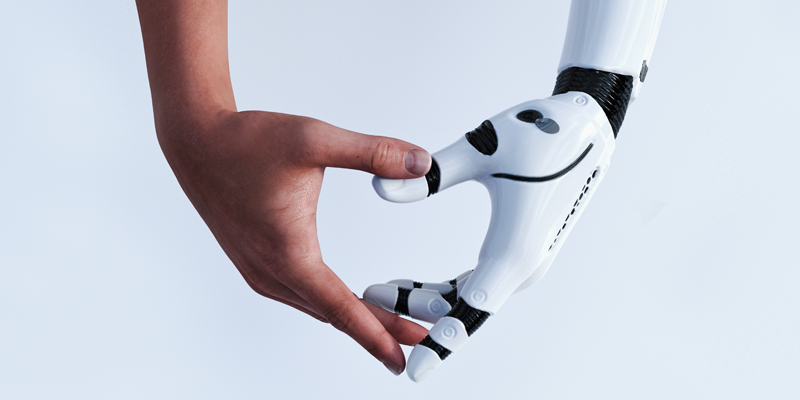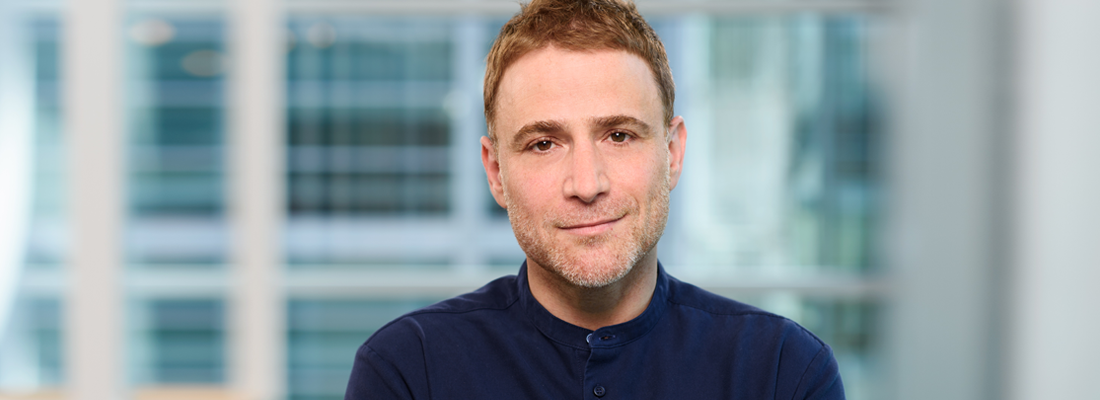
Reading time: 5 Minutes
Slack, the cloud-based set of collaborative tools for teams, is taking over, and changing the way we work for good. Here’s what co-founder Stewart Butterfield has to say about the workplace of the future
Haven’t you heard? Email is dead. At least, that’s what Stewart Butterfield would have you believe. Launched in 2014, his cloud-based ‘virtual assistant’ (which provides team collaboration tools) is doing away with the need for time-consuming and inefficient electronic communication – and changing the way we work altogether.
He might be on to something. Slack is one of the fastest-growing business applications in the last decade. According to its latest figures, there are now more than eight million daily active users across more than 500,000 organisations that use the platform. The company has more than three million paid users and 65 per cent of companies in the Fortune 100 are paid Slack users. More than 70,000 paid teams with thousands of active users connect in Slack channels across departments, borders and oceans.
So when Butterfield and his team share their opinions on the future of work, it’s worth paying attention. Here are five of their predictions.
1. No more mind-numbing tasks
Doing things “by hand” or manually will soon be a thing of the past, thanks to AI, predicts Butterfield. Speaking to Business Insider last year, he compared some jobs to Office Space, a comedy about office workers whose lives are a living hell because their jobs are so trivial. “Technology should be used for automating away things humans do poorly – like remembering things, doing arithmetic [or] comparing hundreds of millions of items with each other and detecting patterns,” he says.
He points to things as simple as Gmail’s predictive suggestions for how to respond to emails, which “take a little bit of the friction out of [the process]”.
In the future “we can give the chores to the machines,” he adds. “The future will belong to humans who know how to operate software, who know what it is capable of, who know how to handle analytics and data science around organisations. That’s going to pay huge dividends.”

AI and Machine learning will empower workers
2. Honesty will be policy – at all levels
In 2018, Slack interviewed more than 1,400 knowledge workers across the US about the future of work. When it came to their thoughts about trust and transparency, the results were striking: 80 per cent of workers said they wanted to know more about how decisions are made in their organisation, with 87 per cent wanting their future company to be transparent.
Butterfield suggests that companies looking to attract top talent must understand that workers of the future want workplaces and tools that enable an open culture of communication and collaboration.
“A lot of that feeling of alienation [people express about the workplace] is driven by people feeling that they don’t understand context, and ultimately decisions don’t make sense,” Butterfield has said in an interview with Business Life. “They don’t get the motivation and can feel frustrated or disempowered.”
Everyone, he says, is looking for the same foundations to their working life. “They want to be trusted, and to be able to trust the people they work with,” he says. “They would like to be respected, and work with people they respect. They want to have clarity around the goals and priorities, and to understand how the outcomes will be evaluated.”
He adds: “To the extent these conditions are absent, they will become unhappy because, in addition to these prerequisites for healthy work, they also want to feel effective, productive, and like they are having an impact.”
3. There will be more human interaction
The plethora of online tools might suggest that our workdays will increasingly be filled by interaction with screens. Yet this doesn’t have to be the case. The Slack Future of Work Study shows that 91 per cent of workers are looking to feel closer to their work colleagues, while nearly 85 per cent of workers want to feel more connected with their remote colleagues.
Speaking to Business Life, Butterfield said: “We often get unexpected bits of feedback from people using Slack that we never would have anticipated in advance. Things like: “I’m very introverted. Before, I felt like I didn’t have a voice in a lot of conversations, because I like to take a little bit more time to formulate my thoughts. Our meetings are very fast-paced and people are constantly interrupting each other. Now that some of the decision-making has moved to Slack, I have a chance to participate.”
“Giving people sufficient context to understand how others make decisions is incredibly powerful and impactful,” he adds. “Imagine there’s something big happening: There’s an acquisition, a change in suppliers or organisational design. What you want in those kinds of cases is a higher degree of alignment, more clarity. If people have questions, you don’t want there to be a lot of uncertainty. You want people to hesitate less while taking more effective actions. So, you want decision-making to be enabled at all levels and for people to feel empowered and autonomous.”
4. The office as we know it will change
The environment in which we work is going to change. On the Slack blog, senior director of operations, Deano Roberts, says the conventional office design has had its day: “The open floor plan, which was conceived in the late ’50s by Herman Miller, was supposed to be the end-all when it came to collaboration productivity,” he says. “But realistically, it works for about 40 per cent of the population. For the other 60 per cent, it causes some anxiety.”
“There’s a diminishing return on free cupcakes, or kind of cliché fixtures in tech offices, like having a ping-pong table or an ironic beanbag chair or a life-size Jenga sitting next to your desk,” he adds.
Instead, Roberts suggests that workplaces will become more intuitive. “If you need something, you should either logically know where to go get it yourself or, if you have to ask us for it, you know we’re going to get it to you immediately,” he continues. “This isn’t to give anyone a sense of entitlement; it’s because we want to remove distractions and improve everyone’s productivity.”
5. The tools we use at work will become more intuitive
“What would it look like to bring more humanity, fun, and delight into the tools we use for work?” asks Christina Janzer, head of research at Slack. “I think we can challenge ourselves to set higher expectations for the work products we build and use every day.”
Along with her team of researchers, Janzer studies how people work and what they need to do their best on the job. And they consistently find that an important signal of employee engagement lies in how people feel about the tools they use at work.
“Engaging employees with technology isn’t just about supplying more efficient or more robust software – it means giving people tools that they look forward to using as much as their personal social media,” she says. “Speeding up workflows through simple interactions can cultivate delight in the workplace. People find genuine delight in increased productivity, in the removal of unnecessary hurdles and steps from their work,” says Janzer.
Traditional offices often don’t work for fast-growing businesses. Find out how Regus can help shape your future


